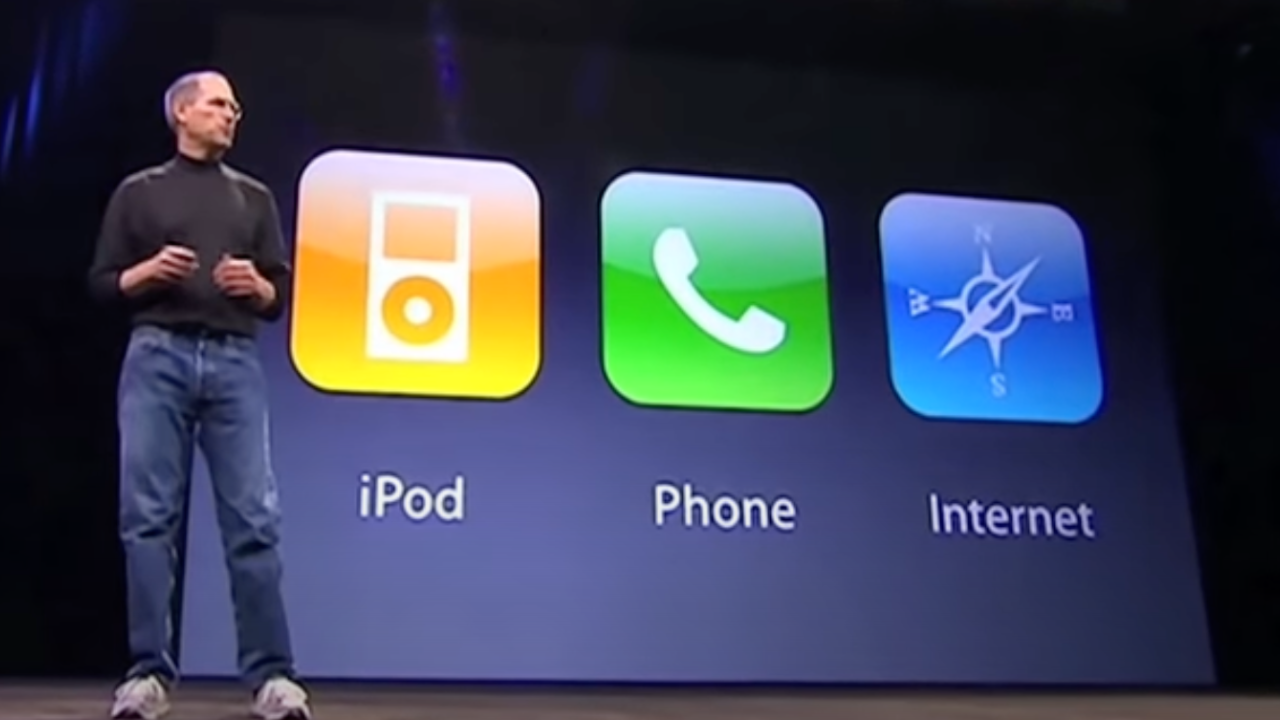6 Steps to Tell Your Story Like Steve Jobs

By John Millen
It was 16 years ago on January 9th, 2007, that Steve Jobs took the stage to announce a new device called “IPhone.”
Looking back, Jobs wasn’t overstating the case when he called it a “revolutionary product” that would change everything.
But it was the late Steve Jobs’ storytelling ability that brought it to life in the world.
Greatest business storyteller
Jobs has been called the greatest business storyteller of all time because he used storytelling to build Apple, the world’s most valuable company.
And when Jobs was fired from Apple in 1985 he decided to become an even better storyteller and built a storytelling company, Pixar.
In 1994, Jobs said:
The most powerful person in the world is the storyteller. The storyteller sets the vision, values, and agenda of an entire generation that is to come… and Disney has a monopoly on the storyteller business. You know what? I am tired of that bullshit, I am going to be the next storyteller.
That was a year before Pixar, a mostly unknown company, would release its first animated feature, Toy Story. Pixar, now owned by Disney, went on to win 10 Academy Awards for Best Animated Feature.
So how did Steve Jobs use storytelling in his business presentations? The best example is from his introduction of the IPhone on January 9, 2007. You can watch the full presentation here.
To be clear, the story here is not simply about the iPhone but a larger narrative about Apple as a company.
But let me give you the six elements of the storytelling framework I see Jobs using in this presentation:
1. Start with your premise and a hook
Jobs grabs the audience’s attention immediately by saying he had been waiting two and a half years for that moment. That’s his hook. Pay attention, something important is happening here.
Then he states his premise: “every once in awhile a revolutionary product comes along that changes everything.” Jobs expands on this theme by repeating “revolutionary” throughout his talk.
2. Pose a problem
Jobs describes the problem: “…the most advanced phones are called smartphones, with little plastic keyboards on them. The problem with smartphones is they’re not so smart and they're not so easy to use.”
3. Create an antagonist
Jobs knew well that the best storytellers create antagonists, the villains that block progress. In his equally classic introduction of the Mac computer in 1984, he unveiled this revolutionary TV ad that pitted a woman warrior representing Apple and Mac against the drones of IBM’s PCs.
In the case of the iPhone the antagonists were the so-called smartphones and their makers, whose clunky products used tiny plastic keyboards, limited usefulness and archaic functionality. They frustrated consumers.
4. Explain the solution
Jobs cleverly explained the solution as three new products: a phone, a music player and an internet browser. “Today, we’re introducing three new revolutionary products.”
He repeats those three items again and again: “An iPod, a phone and an internet communicator.”
Finally, he exclaims: “Are you getting it? These are not three separate devices. This is one device, and we are calling it ‘IPhone!’”
5. Show don’t tell
Jobs injects humor at this point when he says, “Today we are going to reinvent the phone and here it is.” His slide shows a photo an iPod with a rotary dial. (Google “rotary dial” if you’re not familiar with that term.)
To bring his product to life he does a series of extended demos showing all the revolutionary (at that time) features of the new device and talks about the specific benefits.
6. Reinforce your main message
In closing, Jobs makes it personal by saying “I didn’t sleep a wink last night, I was so excited.”
Jobs then recaps his main message of Apple creating revolutionary products such as the Mac in 1984 and the iPod in 2001. He announces that the company was changing its name from Apple Computer to simply Apple to reflect its new approach to products.
Finally, he displays the famous Wayne Gretzky quote: “I skate to where the puck is going to be, not where it has been.”
He closes with “we’ve always tried to do that at Apple, since the very beginning, and we always will.”
A framework for your story
Love it or hate it, Jobs’ iPhone truly revolutionized how we all interact with one another and the world.
The product was a breakthrough, but it was Steve Jobs’ storytelling that brought the iPhone to life.
This is why, in a similar way, Warren Buffett calls developing communication skills the best investment he ever made.
Next time you’re doing a business presentation, consider using this proven framework to tell your story.
Also, I should note that the iPhone is now a teenager, so be careful how you talk to Siri.
RIP Steve Jobs and happy 16th birthday, iPhone.








